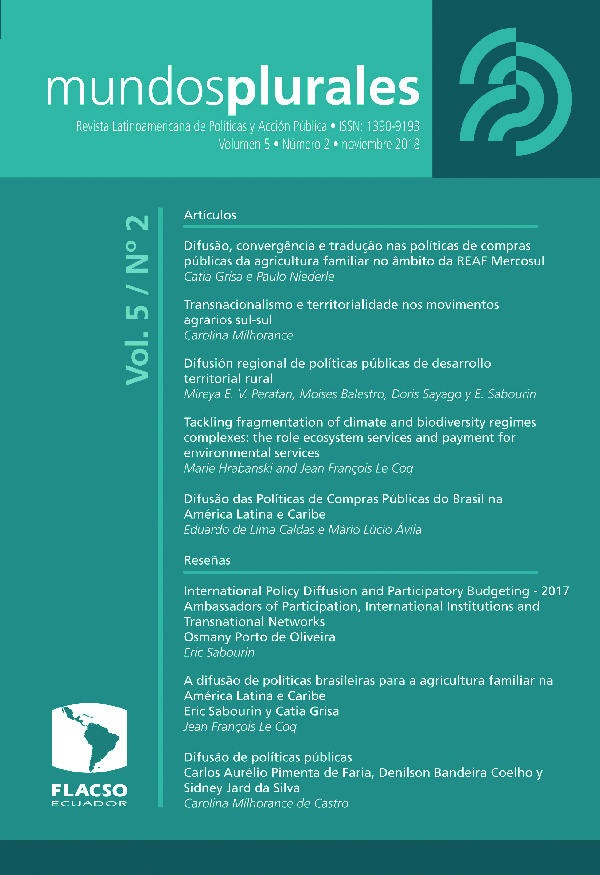Tackling fragmentation of climate and biodiversity regimes complexes: the role ecosystem services and payment for environmental services : the role ecosystem services and payment for environmental services
Resumen
In the realm of global governance, fragmentation is a recognized and recurrent feature and the multiple causalities underlying global governance issues along with their often cross-sectoral and cross-scale dynamics constitute major driving forces for fragmented governance. The article aims to identify the interactions between the elements of two regime complexes: climate and biodiversity. We argue that despite the different structuration and history of climate and biodiversity regime complexes, the notion of Ecosystem services, in developing specific policy instruments such as payments for environmental services, contributes to the synergy of these two complexes regimes. Indeed, ES concept has been an “integrative” and “bridging” concept that facilitated the creation of linkages between climate and biodiversity regimes complexes. First, the diffusion of the ecosystem services concept has been possible though bringing organizations involved in both regimes complexes. Second, the market based instruments for ecosystem services and biodiversity, especially payment for environmental services has been the operational setting that enables to create at national and/or local scales the operational synergies between both issues and regimes. Payment for environmental services can achieve jointly biodiversity conservation and some mitigation and adaptation objective
Descargas
Los autores/as que publiquen en esta revista aceptan las siguientes condiciones:
- Los autores/as conservan los derechos de autor y ceden a la revista el derecho de la primera publicación, con el trabajo registrado con la licencia de atribución de Creative Commons, que permite a terceros utilizar lo publicado siempre que mencionen la autoría del trabajo y a la primera publicación en esta revista.
- Los autores/as pueden realizar otros acuerdos contractuales independientes y adicionales para la distribución no exclusiva de la versión del artículo publicado en esta revista (p. ej., incluirlo en un repositorio institucional o publicarlo en un libro) siempre que indiquen claramente que el trabajo se publicó por primera vez en esta revista.








